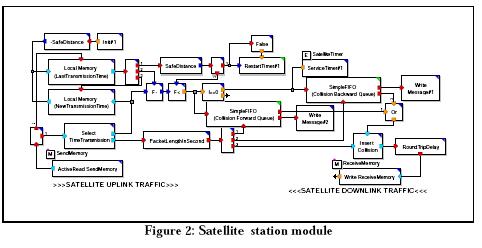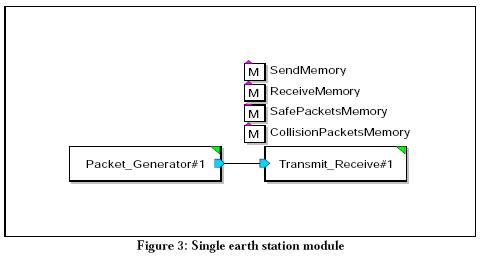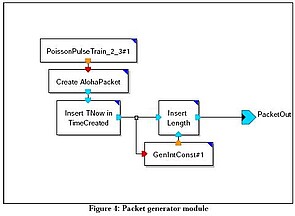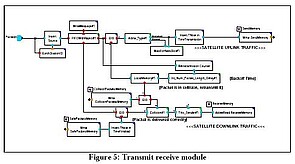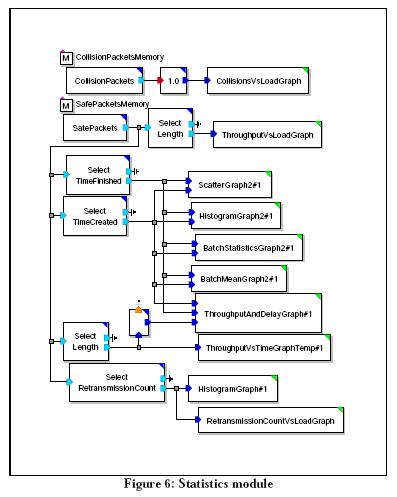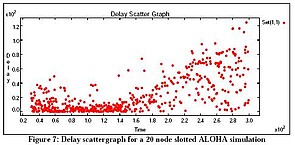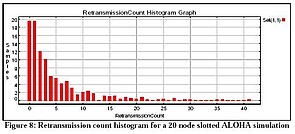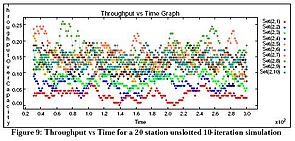Mainnavigation
Subnavigation
BORDER
Pagecontent
- You are here:
- Home »
- MLDesigner »
- Examples »
- Networking Applications »
- ALOHA Protocol
ALOHA Protocol
Analysis of slotted and unslotted ALOHA Communication systems connecting 20 Earth stations with Geostationary Earth Satellite (GEO) satellite
This is a brief summary of an MLDesigner model that simulates both ALOHA and Slotted ALOHA protocols. It demonstrates modeling techniques and shows the protocol design capability of MLDesigner. ALOHA is a random (or contention) access protocol developed at the University of Hawaii for sharing broadcast channel access among a number of users with relatively low throughput demand. There are two main ALOHA versions: unslotted, which has no coordination between system stations, and slotted, which uses a master clock to provide synchronized channel time slots to improve throughput. ALOHA protocols are often used in satellite communications systems and cellular radio systems and are a precursor to the popular Ethernet protocol.
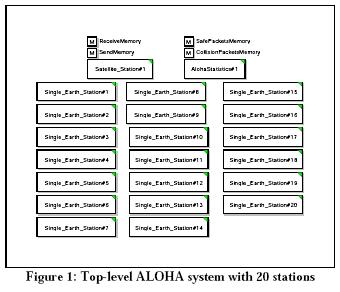
2. Parameters
The ALOHA model is extensively parameterized. System-level parameters are shown below.
AlohaType: This parameter has two possible values: Unslotted and Slotted. It determines whether to execute the ALOHA or Slotted ALOHA protocol.
SafeDistance: The minimum distance in seconds between two packets to avoid collision.
RoundTripDelay: The satellite round-trip delay in seconds.
SatelliteQueueSize: The maximum number of elements that can be held in each of the two queues used in the Satellite_Station module.
EarthStationQueueSize: The maximum number of packets that can be held in the queue<br />of the Single_Earth_Station module.
PacketLengthInBits: Length of the packet used in both ALOHA and Slotted ALOHA models.
RandomizationParameter: A uniformly selected random number between one and this parameter, multiplied by the PacketLengthInSecond parameter, determines the backoff time delay.
PacketLengthInSecond: Time required transmitting a packet of length PacketLengthIn-Bits.
SlotSize: Size of the time slot used in the Slotted ALOHA model.
MeanInterArrival: Mean time between two packets arriving at an earth station for transmission.
TrafficStopTime: Time to stop generating traffic in all the earth stations. This can be different than the RunLength parameter.
Load: Combined traffic, generated in all earth stations, as the percentage of the satellite channel capacity.
ChannelSpeed: Data rate in bps for the satellite channel.
RunLength: Simulation iteration length in seconds.
GlobalSeed: Seed used in generating random numbers.
WarmupTime: In this early period of the simulation, data are not collected. This is the time to reach the steady state.
NumberEarthStations: Total number of Earth stations in the system.
3. Data Structures
The Aloha model uses two MLDesigner data structures: AlohaPacket and AlohaType. AlohaType configures the model to run as slotted or unslotted. AlohaPacker has seven fields:
- Source: Earth station originating the packet.
- TimeCreated: Time at which Source creates the packet.
- TimeFinished: Time at which the packet is delivered successfully.
- TimeTransmission: Time at which Source transmits or retransmits the packet.
- Length: Packet length in bits.
- Collision: Flag showing possible packet collision.
- RetransmissionCount: Number of times Source retransmits the packet until it is delivered successfully.
4. Modules in the Aloha_System_Nodes20 Model
This section presents the functional description of the modules used in the Aloha_System_Nodes20 model.
4.1. Satellite_Station Module
The Satellite_Station module is shown brlow. The primary function of the module is to detect collisions; it also includes both packet transmission delay and satellite round-trip delay.
The Packet_Generator module, shown in Figure 4, generates packets of the AlohaPacket type with the interarrival time exponentially distributed.
The Transmit_Receive module, shown in Figure 5, en-queues the newly generated packets in a FIFO queue and transmits them one at a time whenever the station's previously sent packet is correctly delivered.

